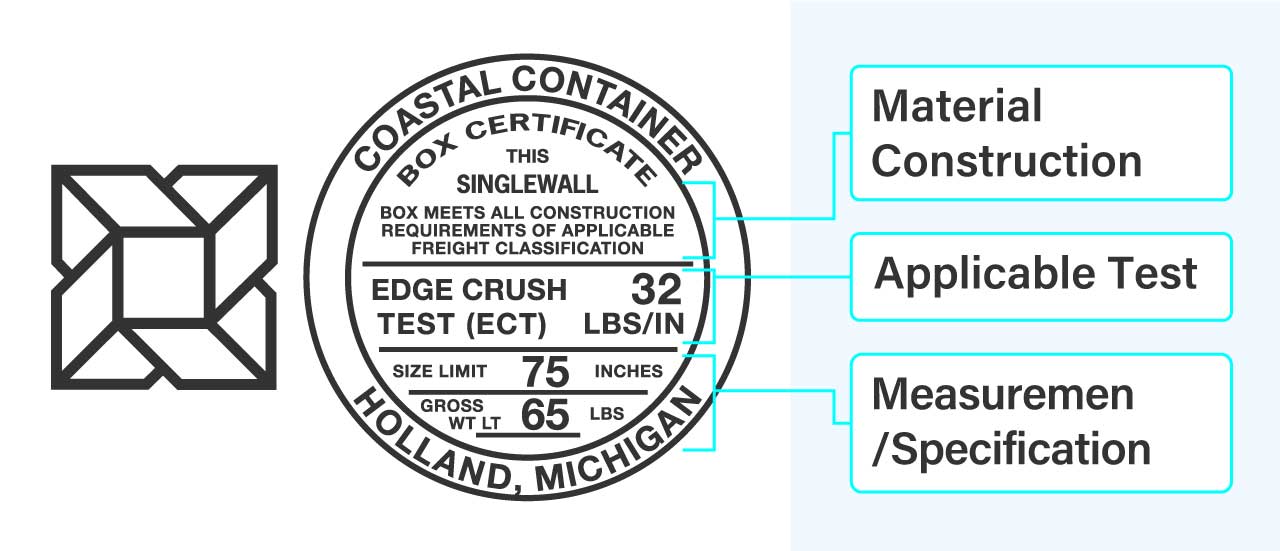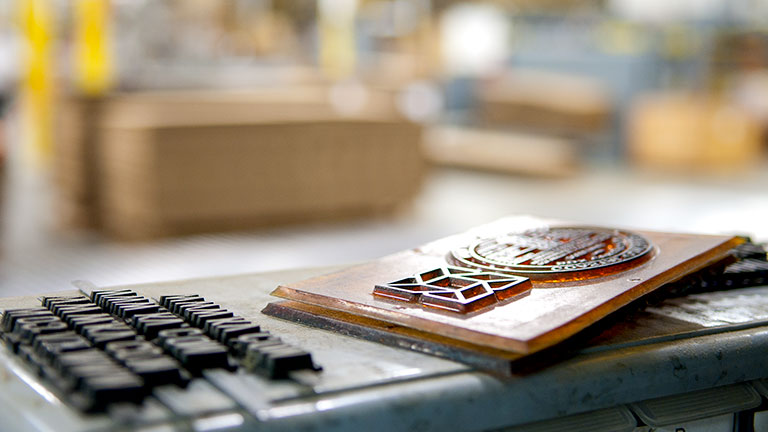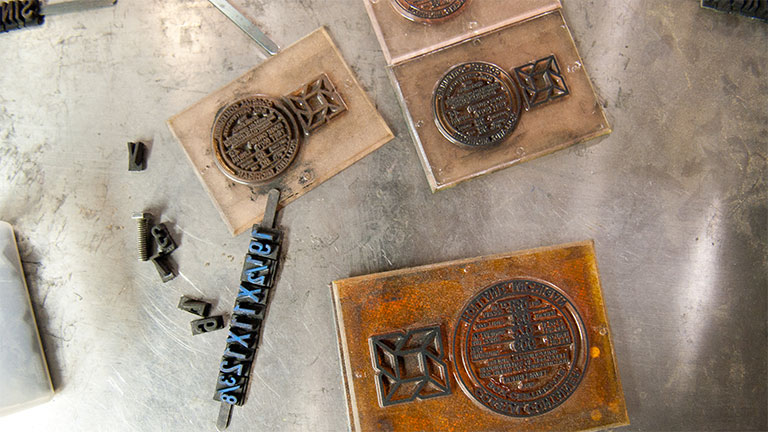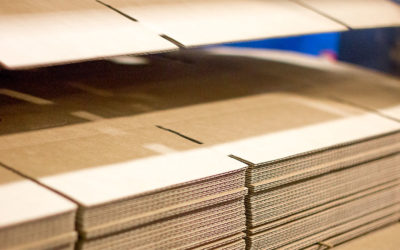If you buy a box of cereal at the grocery store and glance at the back or side panels, you’ll find a list of nutrition facts. You can quickly and easily discover the amount of carbs, fat, sugars, and protein in one serving of the breakfast staple. We see these markings frequently and familiarity makes them easy to read.
While you won’t find information about caloric content, corrugated boxes have a similar marking in the form of a Box Manufacturers Certificate. This stamp on the bottom of most corrugated boxes, while easy to overlook, is incredibly useful in determining whether or not a box meets your needs.
Anatomy of a Box Certificate Stamp


Depending on the intended use of the box and the tests we apply to measure its strength and durability, our certification stamps may include a number of different metrics:
| Singlewall | Denotes corrugated material constructed with one layer of medium and two layers of linerboard. |
| Doublewall | Denotes corrugated material constructed with two layers of medium and three layers of linerboard. |
| Triplewall | Denotes corrugated material constructed with three layers of medium and four layers of linerboard. |
| Mullen/Bursting Test | A material strength test that measures a box’s puncture resistance. Measured in pounds per square inch. |
| Edge Crush Test (ECT) | A material strength test that measures a box’s column or corrugation stacking strength. Measured in pounds per inch. |
| Minimum Combined Weight of Facings (Min Comb Wt Facings) | The total combined weight of the facing, the large uncut sheet of corrugated material the box is made from. Measured in pounds per thousand square feet. |
| Size Limit | The maximum total outside dimensions of the box, adding the measurements for depth, width and length. Measurements larger than this number creates a weaker box. Measured in inches. |
| Gross Weight Limit (Gross Wt Lt) | Denotes the absolute maximum load weight that the box can handle (including the weight of the box itself). Measured in pounds. |
You may notice that our example stamps (above) each only display one test, either the Mullen or ECT test. We choose which test result to print on the box depending on the type of paper used to make the corrugated material. The type of paper will be single, double or triplewall, and will either be rated as Mullen or ECT, which determines what will be included on the stamp. Not all boxes need both tests, and in these cases the test that’s run is the one shown on the stamp.
Testing the Strength of Corrugated Materials
The information and metrics included in the stamp are based on how the box materials were manufactured as well as what tests we conduct to calculate the strength of the box.
Our boxes all bear a stamp stating that the box “meets all construction requirements of applicable freight classification,” which serves as our promise that the printed measurements and test results are accurate. We work diligently to ensure that the information presented on our boxes is accurate and up to date.
There are two main tests used in the corrugated packaging industry to determine the strength of the corrugated material used to construct a box: the Mullen Test (also known as the Bursting test) and the Edge Crush Test (ECT).
The Mullen Test (Bursting Test)
Though it’s name sounds quite dramatic, the Bursting Test simply involves compressing a flat piece of corrugated material between two plates of a hydraulic press. The press measures the amount of pressure applied at the time the material bursts, defining the maximum amount of pressure the material can withstand before breaking.
Imagine the difference between gently tapping the side of a box with a hammer versus swinging a hammer vigorously at the box’s side. As you increase the pressure of the impact, the box will be more likely to puncture. The Bursting Test allows us to determine how resistant a box is to being punctured, measuring this strength in pounds per square inch.
The Edge Crush Test
The Edge Crush Test (ECT) measures the strength of the box when it’s stacked, particularly how much weight it can withstand before the material crumples or buckles. We measure the amount of pressure the sample was able to withstand in pounds per inch.
A small sample of corrugated material is cut from the main sample and set perpendicular to a hydraulic press. The press lowers onto the material, increasing the pressure on the sample until it succumbs and buckles under the pressure.
This test tells us how much weight we can stack on top of the box before running into a structural issue. While it may not seem important when stacking only two or three boxes, storing dozens of boxes in a warehouse can pose a logistical problem. If the bottom box gets crushed when more than a few boxes are stacked atop it, it reduces the amount of usable storage space.
Box Compression & Drop Tests
With the values collected in the ECT test, we could use the McKee Formula to get a rough estimate of how much compression a box would endure. However, we also employ a number of other tests which may not necessarily appear within the stamp to ensure the structural integrity of a box and its ability to protect your product. Two of those include the box compression and drop tests.
Trustworthy Stamps
When dealing with any company, reliability and trust are incredibly important factors. Coastal Container is confident that all of our boxes meet the stated figures on our stamps.
When ordering corrugated packaging materials from a new company, ask the company for their latest material testing data.
Do you have questions about corrugated materials, certification stamps, or how strength testing works? Reach out and chat with us! We’re more than happy to answer any questions you have.

Find a Corrugated Packaging Solution
Contact us today to get your project moving in the right direction.
Give us a call or request a consultation using the form to get started.
Phone: (616) 355-9800


